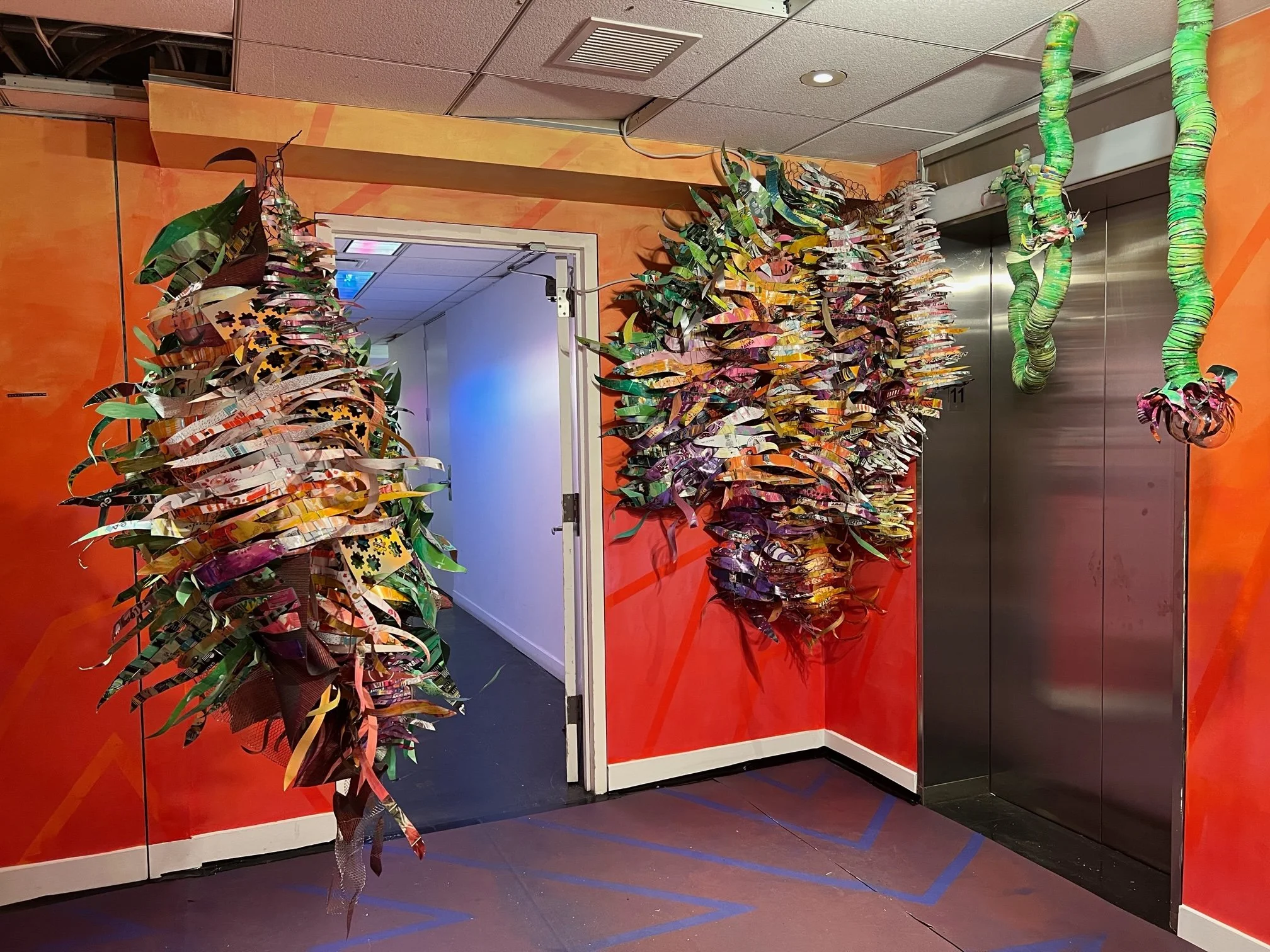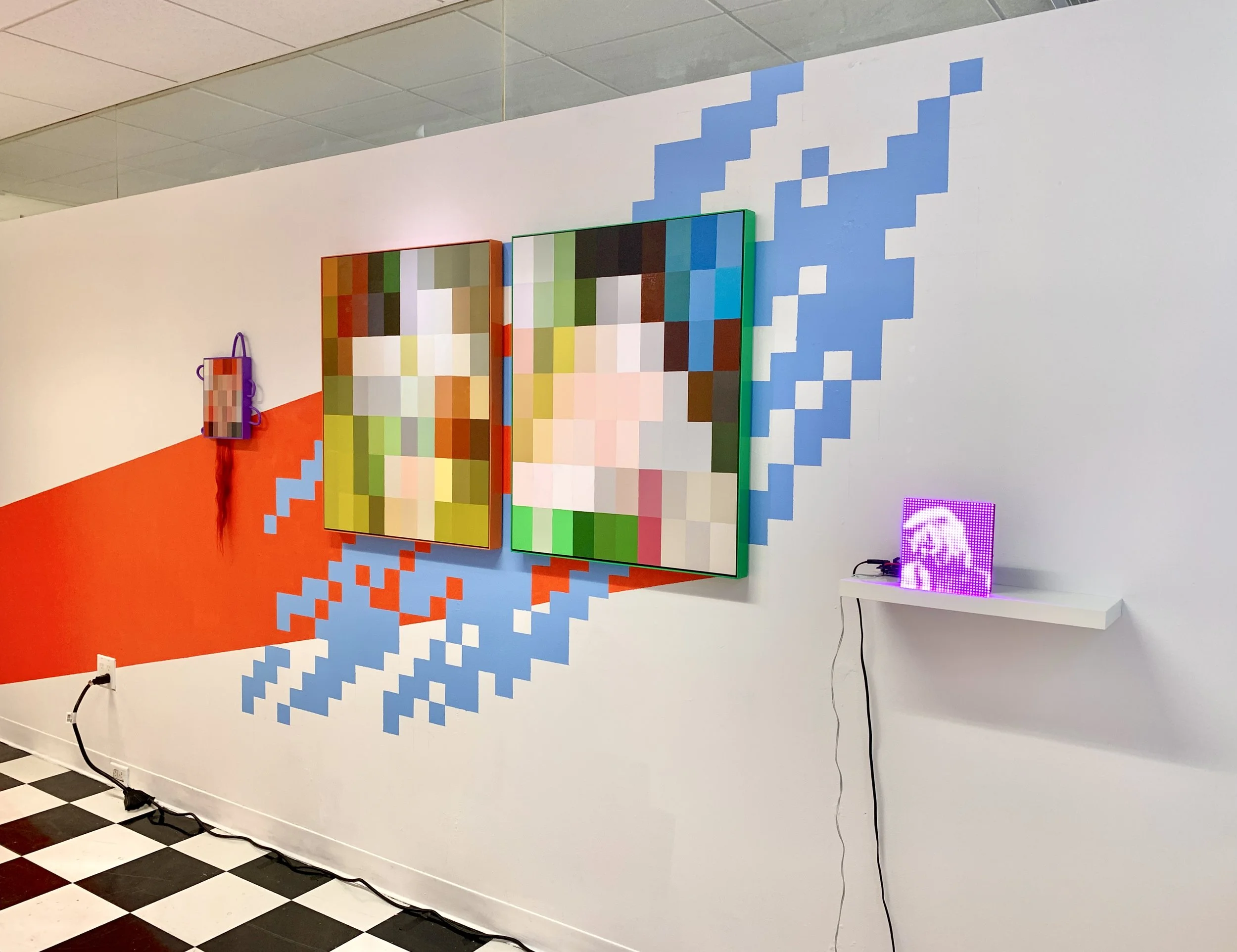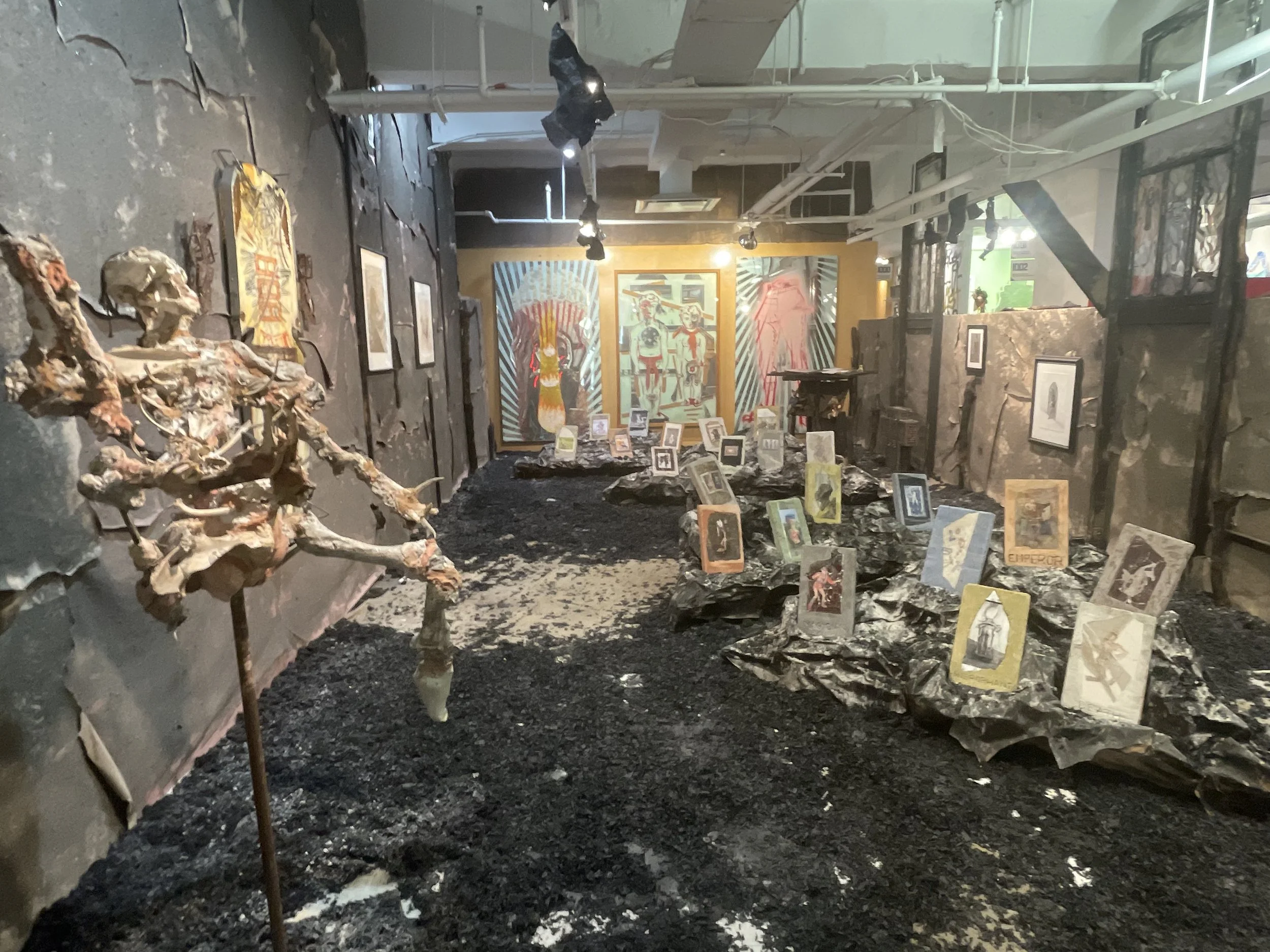New Faces and Voices at SPRING/BREAK 2023
For the art fair’s latest iteration, SPRING/BREAK Art Show has returned to its past. Rather than introducing a new theme this year, applicants were able to choose from the fair’s previous themes for their curatorial projects. While one could imagine that such a setup might result in a rehash of past fairs, this year’s SPRING/BREAK is anything but ossified. Alongside many familiar faces are projects by artists and curators making their SPRING/BREAK debuts.
Christina Massey: Uncharted Growth, curated by Etty Yaniv
Installation view of Uncharted Growth, featuring Christina Massey and curated by Etty Yaniv. Image courtesy of Christina Massey and Etty Yaniv.
Situated near the elevators, Christina Massey’s sculptures are the first thing many see when arriving on the eleventh floor. Cut-up repurposed aluminum cans form leaves and tendrils sprawling across the booth’s walls and overflowing from pedestals. Rendered in vibrant metal, Massey’s foliage is delicate and robust. Its material connection to garbage and refuse serves as a reminder of humanity’s impact on the natural world.
Installation view of Uncharted Growth, featuring Christina Massey and curated by Etty Yaniv. Image courtesy of Christina Massey and Etty Yaniv.
Jingyi Wang: Solid Wind, curated by Gallery Poulsen
Installation view of Solid Wind featuring Jingyi Wang. Image courtesy of Gallery Poulsen.
The botanical theme continues in Copenhagen-based Gallery Poulsen’s booth: Jingyi Wang’s paintings depict human/cactus hybrids. Drawing from conventions of portraiture and figure painting, Wang immerses the viewer in a surreal world populated with cactus people in quotidian scenes: having a picnic, going for a walk, or lying in bed. Wang’s cactus people are solitary beings, each occupying its own painting. Could this be because interactions between them might get prickly?
Installation view of Solid Wind featuring Jingyi Wang. Image courtesy of Gallery Poulsen.
Lise Ellingsen: The Norse Cosmos Claw Game, curated by M. David & Co.
Installation view of The Norse Cosmos Claw Game featuring Lise Ellingsen. Photo Credit: Samuel Morgan Photography, @SammySachs. Copyright (c) SPRING/BREAK Art Show @springbreakartshow
Also hailing from Scandinavia, Norwegian artist Lise Ellingsen’s installation — curated by M. David & Co. — uses claw machines and Norse mythology as allegories for humanity’s self-destruction. The installation is centered around a giant mechanical claw holding a depiction of Aðumbla (a bovine Norse deity of creation) plucked from the surrounding magical forest and appearing moments away from slipping out of the claw’s grasp. There is also an interactive claw machine that visitors can play for a chance to win 3D-printed sculptures of figures from Norse mythology.
Installation view of The Norse Cosmos Claw Game featuring Lise Ellingsen. Photo Credit: Samuel Morgan Photography, @SammySachs. Copyright (c) SPRING/BREAK Art Show @springbreakartshow
Arlene Rush and Caroline Voagen Nelson: After the Gold Rush, curated by AHA Fine Art
Installation view of After the Gold Rush. Image courtesy of AHA Fine Art.
AHA Fine Art’s two-person booth features work that speaks to the excesses of late-stage capitalism and the contemporary political climate with a nod to its historical aesthetic. Arlene Rush’s series Where Liberty Dwells features gilded objects set upon tasseled pillows on ornate plinths. These objects speak to the excesses of American life: guns, golf balls, burgers, and landmarks like the White House and the Statue of Liberty. Caroline Voagen Nelson's Heavy Lies the Wig of Opulence, a mixed-media animated sculpture, references the historical excesses of the Baroque era. The oversized wig is the target of a projected animation and is set in an ornate Baroque picture frame.
Installation view of After the Gold Rush. Image courtesy of AHA Fine Art.
Alfred Steiner and Jonathan Quinn: Smell the Glove, curated by Peter Dudek
Installation view of Smell the Glove. Image courtesy of the artist and curator.
Alfred Steiner’s paintings oscillate between the physical and digital realms. Steiner employed the AI image generation engine Midjourney as a tool to reimagine two of his existing paintings. The artist then sent the output images to a painting studio in China where workers copied them onto canvases. The paintings are inextricably enmeshed in ethical issues around manual and digital labor. In an age when advancements in AI threaten jobs in creative fields, hand-painting an AI-generated image seems like an act of resistance. Still, the hands painting these images are those of workers caught up in the exploitative capitalist system.
Sue Beyer, Visakh Menon, and Amy Vensel: Artificial Interference, curated by Amy Vensel and Sue Beyer
Visakh Menon, 18I-Interference, 2021. Acrylic on wood panel, 16 x 16 in. Image courtesy of the artist and curators.
Visakh Menon also works in the liminal space between the physical and digital. His artworks, while appearing to be digital data visualizations or glitches, are actually meticulously hand-painted on wood panels. The act of executing such a painting lies somewhere between meditation and the repetition of algorithmic processes.
Installation view of Sue Beyer’s work. Image courtesy of the artist and curators.
Sue Beyer’s “digital combines” merge paint, hardware, and code in an algorithmic alchemy that transmutes data into art. Amy Vensel’s bifurcated canvases offer an abstract glimpse at the ways in which digitalization can alter one’s sense of reality through the reduction of the world to strings of ones and zeroes.
Installation view of Artificial Interference. Image courtesy of the artists and curators.
Chapel of Traumaturgy, curated by Z Behl and Jesse Gegenbach
Installation view of Chapel of Tramaturgy. Image courtesy of the artists and curators.
Featuring work by Cecilia Caldiera, Bruno Smith, Ray Smith, Jesse Gengenbach, Rhys Gaetano, Victor Vazquez, Jesse Keating, Walker Behl, Tone Tank, and Z Behl, Chapel of Traumatology presents an arcane space in a state of glorious ruin. Z Behl’s gravestone-like sculptures based on Tarot cards are materially unique, each being a UV print on marble cast in concrete. Behl’s Skeleton Woman, a sculpture made from concrete and bones, adds to the booth’s powerful atmosphere of ruin and decay.
'!WILD CARD!' Exhibition
625 Madison Avenue, NY NY
First Look | Wednesday, Sept 6th, 11AM - 5PM
Opening Night | Wednesday, Sept 6th, 5PM - 8PM
Regular Show Days | Thursday, Sept 7th - Monday, Sept 11th, 11AM - 7PM













